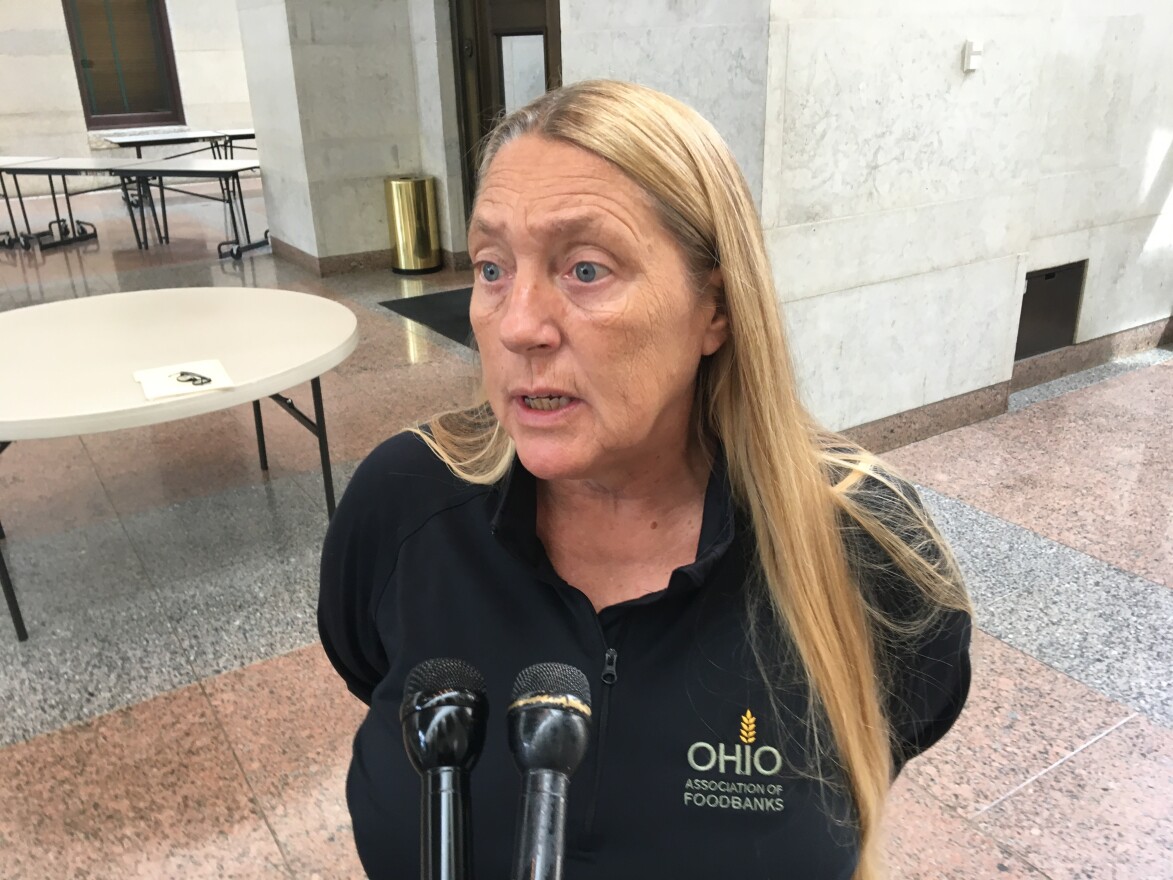The numbers of low-income Ohioans turning to food pantries for help are climbing. And with signs of trouble for the economy on the horizon, advocates at Ohio's 12 regional foodbanks and the hundreds of food pantries and soup kitchens that they serve are worried.
There’s a line of people waiting outside the All People’s Fresh Market on the south side of Columbus before it opens.
Among those customers is John Hairston, who said he visits this food pantry once or twice a week. And he’s noticed an increase in the number of people who’ve joined him in the line.
“It’s probably a combination of joblessness, having some hard times or whatever the case may be. You know, circumstances can just provide opportunity every now and then where things go bad and then somebody else has a compliment and things go good,” Hairston said.
And has he seen a lot of people he doesn’t know, people who could be first-timers at this pantry? “Yeah, yeah I have,” he responded.
This food pantry is unique – it offers fresh fruits and vegetables so customers can use their food stamp or SNAP benefits for other things at grocery stores. Those customers choose their items and then walk around to a wall of refrigerators with dairy products, juice, hummus, yogurt and coleslaw.
And before they leave they’ll walk by Helen Morgan, who’s putting salad greens into plastic containers. She also shops at this food pantry, and she’s noticed the lines. “Sometimes it’d be so busy you can’t keep up,” she said.
And she said she also notices people she doesn’t recognize: “Just about every day that I’m here, which I’m not here all time, but when I am here, I see a lot of new faces.”
Manager Gary Stevens has the numbers to back up those claims of increases in customer traffic. “It’s almost doubling from when we opened a year and a half ago,” he said.
The All People’s Fresh Market was serving 300 households when it opened in February 2018. That’s grown to about 500 families a day. And increases are happening all over Ohio.
“For the period ending June 30, we broke another record. We were up 13.5% in the number of individuals served, 13.9% in the number of households served just over the prior year. So we’re just in food pantries alone, over 2.3 million Ohioans,” said Lisa Hamler-Fugitt, the executive director of the Ohio Association of Food Banks.
Hamler-Fugitt said it’s a math problem - incomes are not rising as fast as the costs of basic needs are. Temporary and contingent jobs aren’t full time jobs with guaranteed hours and benefits. And higher housing, health and child care, and transportation costs are taking bigger chunks out of their earnings – and emergencies or sudden expenses can be devastating. And she notes SNAP participation has fallen to one of its lowest levels – and some who don’t qualify for SNAP will seek out food banks for help.
Not all food pantries are serving more people. Dan Flowers is the president and CEO of the Akron Canton Regional Foodbank. He said the numbers there have been steady. But he notes while unemployment is at 4% – the lowest it’s been in almost two decades – poverty is around 14%.
“The food pantries and soup kitchens and food banks in this state are like a bucket brigade on a five alarm house fire. Any maybe it’s a four alarm house fire when unemployment goes down. But it doesn’t make the bucket brigade that much bigger,” Flowers said.
And he’s worried with people struggling with poverty and food insecurity in a good economy, what will happen if there’s a downturn – which experts have said leading indicators are suggesting could be coming.
Hamler-Fugitt said she thinks that's already begun.
“When we looked at the numbers and saw the marked increase that we experienced in this past quarter, we started to go back to look at the quarters just prior to the Great Recession. And this is the trend that we began to see,” Hamler-Fugitt said.
Back at the All People’s Fresh Market, the line is dying down a bit. Michael Premo is helping out – he’s with the Church for All People across the street, which runs this food pantry.
“We’re able to do what we can to provide for folks to help them stabilize. But if there’s a downturn, there’s going to be a lot more help needed. We’re doing our part here on the South Side, but we’re going to need state and federal government to step up,” Premo said.
Hamler-Fugitt also said there’s been less fresh food for some operations to offer, as heavy rains and flooding hit Ohio farmers with one of the worst growing seasons on record.
Copyright 2021 The Statehouse News Bureau. To see more, visit . 9(MDA5NTM4MTIyMDE0MTg3NDc2MTVlZjdmNQ001))







